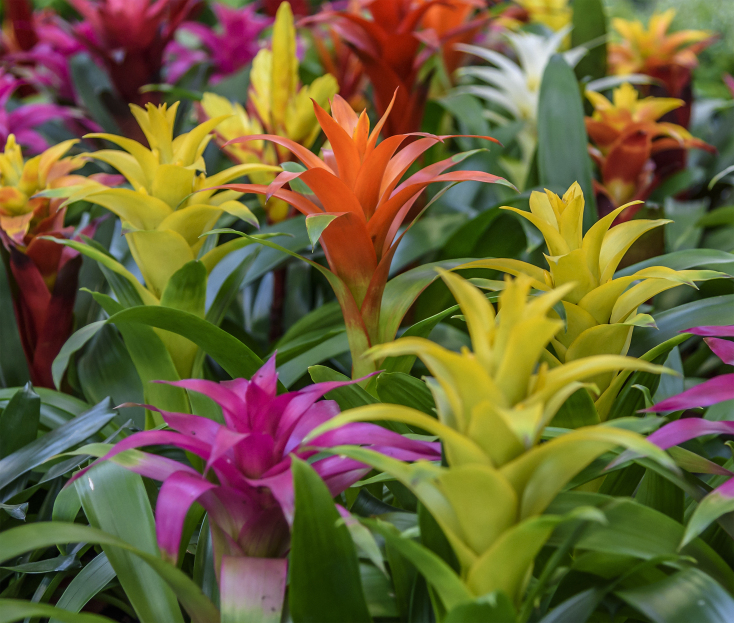
Bromeliads are vibrant, unique plants that bring a splash of tropical color and texture to any space. With their stunning rosettes of leaves and eye-catching flower spikes, they’re sure to turn heads — plus, they’re surprisingly easy to care for! Whether you’re a seasoned plant enthusiast or a first-time grower, this guide will walk you through everything you need to know to keep your bromeliad healthy and thriving.
Bromeliads love bright, indirect light. A north or east-facing window is perfect — it gets enough light without exposing the plant to harsh, direct sun. Too much sun can scorch the leaves, while too little light may cause the vibrant colors to fade.
If you’re growing a bromeliad indoors, a spot near a window with filtered light or even under a grow light will keep it happy.
Bromeliads have a unique way of drinking water — they absorb moisture through their central cup (the rosette formed by their leaves). To water properly:
Use rainwater or distilled water if possible — tap water’s chemicals can cause browning on the leaves.
Bromeliads prefer light, airy, and well-draining soil. A good mix includes:
Alternatively, a cactus or succulent mix works well. Make sure your pot has drainage holes to prevent soggy soil, which can lead to root rot.
Bromeliads hail from tropical climates, so they enjoy warm temperatures between 65-80°F (18-27°C). Avoid exposing them to temperatures below 50°F (10°C) — they’re not fans of the cold!
They also thrive in moderate to high humidity (40-60% is ideal). If your home’s air is dry — especially in winter — consider:
Bromeliads are light feeders. During the growing season (spring and summer), fertilize once a month with a balanced liquid fertilizer diluted to half strength.
For extra color and blooms, use a bromeliad-specific fertilizer or one designed for orchids — apply it to the leaves and central cup, not the soil.
Bromeliads are pretty low-maintenance, but here’s how to keep them looking their best:
After blooming, bromeliads put their energy into producing pups — small offshoots that grow from the base. Once these pups reach about 1/3 the size of the mother plant:
Yes! Bromeliads are non-toxic to cats and dogs, making them a safe, vibrant choice for pet-friendly households.